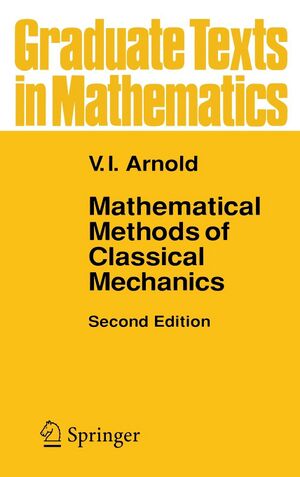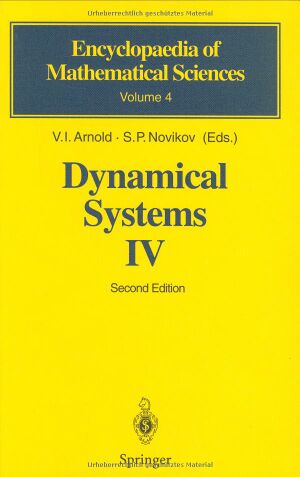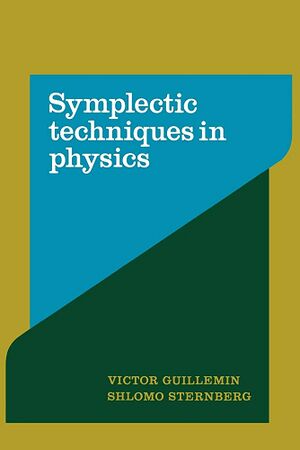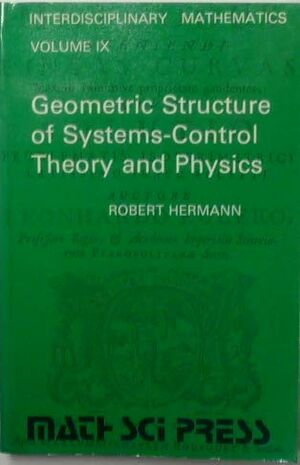Mechanics (Book)
| Mechanics | |
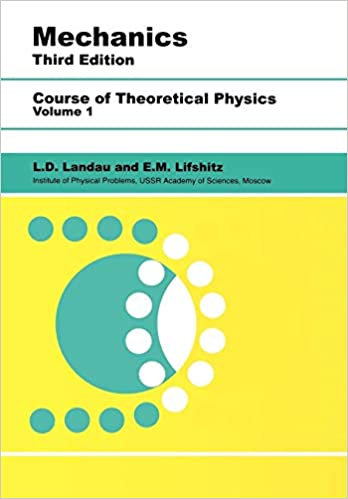
| |
| Information | |
|---|---|
| Author | Lev Landau |
| Language | English |
| Series | Course of Theoretical Physics |
| Publisher | Butterworth Heinemann |
| Publication Date | 1976 |
| Pages | 170 |
| ISBN-13 | 978-0-7506-2896-9 |
Mechanics by Landau and Lifshitz is the start of a profound transformation of the reader from basic calculus to all of mathematics and physics. The seeds of nearly all modern subjects of interest can be found here and in the following volumes starting with the principle of least action in a coordinate invariant manner. Coordinate invariance means there is no artificial distinction between linear and angular momenta, because they are simply the momenta measured along different (cartesian vs spherical) coordinates. Further, this sets the way for physical reasoning by focusing on the geometrical qualities of the trajectories of particles which is expanded upon in mathematics as variational calculus on manifolds and symplectic geometry respectively, to the beginning and end of the book. Fundamental formulae such as Newton's laws, Kepler's formulae of celestial mechanics, and the formulae for energy are derived simply from the principle of least action. Prerequisites are minimal, but strength of courage and to interpret physics simply are required.
Since Landau, the most significant change to the foundation of the subject other than the rewriting of the same laws in differential geometric language is the replacement of informal infinitesimal arguments with Lie Group and Lie Algebra constructions. Simply, a Lie Group represents a parametrized family of finite-change transformations such as rotations by an angle or translations by a vector. The Lie Algebra in an instantiation of a Lie Group transformation is then a vector field representing the transformation infinitesimally. The method is powerful because one can check if a quantity is conserved by checking infinitesimally, if the derivative in the direction of the vector field is 0. This can be done for higher dimensional quantities, not just scalars, through commutators or the Lie derivative - commutators are not unique to quantum mechanics. What it does is replaces some of the proofs in Landau's text with one line of Lie-algebraic manipulations. Since then, Lie Algebras have become a foundation of geometry as exhibited in Arnol'd's geometric perspective on ordinary differential equations and on the mathematical structure of classical mechanics. Olver's books applies these methods more generally to PDE theory and variational problems, giving radical simplifications in the form of otherwise difficult to solve equations via their Lie symmetries. As a side effect of the approach aiming to give geometric constructions of dynamical and variational problems, powerful computational techniques useful for applications appear.
Lie Groups and Lie Algebras are ubiquitous in all of physics, typically introduced later in analogous situations in classical field theory or quantum mechanics, but are just as simply introduced in mechanics and make the analogies between the Hamiltonian formalisms in each area manifest.
The main differential geometric structure of Hamiltonian mechanics is a symplectic 2-form, an antisymmetric function linear in each of two variable tangent vectors. A manifold/coordinate system given a symplectic form is known as a symplectic manifold, and the form is used to exhibit the duality between the position and momentum coordinates in phase space. Constraining one's geometric structure constrains the set of possible transformations to those preserving the structure, canonical or symplectic transformations, and thus simplifying computations giving stronger geometric results. Rather than summarizing the results, we indicate a few of these structures derived from the symplectic form: moment(um) mappings associated to finite dimensional Lie subgroups of the symplectic group, Lagrangian submanifolds of a symplectic manifold, periodic orbits of a given system. All of these help to determine the topology of a symplectic manifold, and can be honest representations of the manifold itself, as well has having some influence in the process of quantization. Quantization based on symplectic manifolds appears in geometric quantization. The momentum map and basic phase space quantization is in Woit's book.
The next three books introduce symplectic geometry and cover different aspects and applications. First, Vladimir Arnol'd initiated the field of symplectic topology - utilizing symplectic structure as an invariant of the space. In his book he elaborates on the foundations of the subject in modern geometric language. In contrast, Sternberg and Guillemin's book discusses the history of how the concept of symplectic geometry emerged and how it continues to evolve. Consequently, it doesn't get as far into geometry but reaches various parts of physics such as optics, a geometric definition of quantum mechanical particles, Yang-Mills Fields, and the moment map. We single the moment map out here, as its role in quantum mechanics is to show how orbits in a quantum mechanical phase space map to points in the convex space of underlying probability distributions. Sternberg and Atiyah independently showed this convexity with a general setting in a landmark result. Finally, Hermann's book develops applications in control theory, electronic circuits, and develops further geometry for his purposes. His books are unique and self-published, so rather than inserting them all here we compiled a list. He engaged in engineering topics such as in the conferences at NASA Ames, and this resulted in a profound new geometric approach to engineering "applied pure mathematics." Noteably, among topics such as control theory, algebraic geometry, computing, soliton waves, he wrote about gauge theory and is the unsung source of the realization that gauge theory is the language of particle physics and the standard model that is now associated with physicists Weinberg, Salam, Wilson, 't Hooft, and mathematicians Atiyah and Bott.
Often when new techniques or structures are found in higher level formalisms such as quantum field theory, they are found to have simpler instantiations that were implicit in existing classical mechanics techniques. From the symplectic point of view, we use vector fields with underlying scalar functions called Hamiltonians to establish an ODE for time evolution. Dynamical systems theory takes this, and generalizes to 'a qualitative theory of ODEs' where the phase space need not be position and momentum but any dimension space where the evolution happens. Either with Hamiltonians or other ODEs of dynamical systems, we can take a continuous family of different systems depending on a parameter (introduced in Arnol'd's Dynamical Systems IV) and see that there are discontinuous changes or 'bifurcations' in the orbit structure of the system as the parameter varies. In QFT, symmetry breaking/the Anderson-Higgs mechanism and goldstone bosons/superconductivity also depend on a parameter at which there is a discontinuous phase change and an appearance of new particles. Bifurcation theory can be seen as the distillation of this from infinite dimensional QFT into finite dimensions, and Kuznetsov's book covers the basic theoretical and numerical techniques. The dynamical systems series includes bifurcation theory in volume 5, but we felt that since its role is as an encyclopedia and Kuznetsov's book is more original to choose to include his. This and the dynamical systems series are the highest quality works in the subject. Most of the rest of the works of the subject are not worthwhile because they are no use to important mathematical or physical problems. The subject's name betrays its obscurity, because any area of physics with a notion of time such as fluid mechanics is also dynamics as shown by Arnol'd yet not studied by most dynamical systems scholars.
The remainder of the applications will be devoted to more advanced symplectic topology.
Applications[edit]
Applications of Lie Groups to Differential Equations
Applications of Lie Groups to Differential Equations by Peter Olver.
Mathematical Methods of Classical Mechanics
Mathematical Methods of Classical Mechanics by Vladimir Arnold.
Geometric Structure of Systems-Control Theory and Physics
Geometric Structure of Systems-Control Theory and Physics by Robert Hermann.



